
SMU flat-rolled market survey results now available
SMU’s latest steel buyers market survey results are now available on our website to all premium members.

SMU’s latest steel buyers market survey results are now available on our website to all premium members.
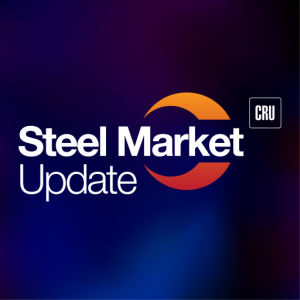
Steel mill lead times held relatively steady this week on both sheet and plate products, according to responses from SMU’s latest market survey.
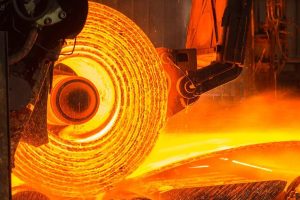
Participants in the domestic coil market hope producer price increases indicate strong market conditions entering the new year.
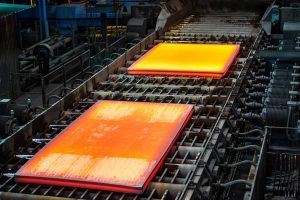
Less than half of the steel buyers who responded to our market survey this week reported that domestic mills are willing to talk price on new spot orders
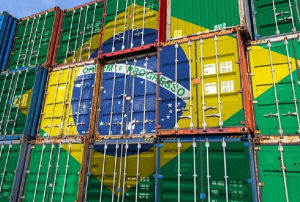
The pig iron market in Brazil has moved up since our last report for US-bound cargoes.

The price spread between hot-rolled coil and prime scrap has widened for the third consecutive month in December, based on SMU’s most recent pricing data.
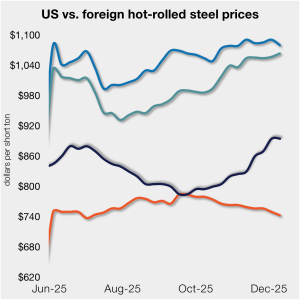
The price gap between stateside hot band and landed offshore product continues to narrow toward parity, now at its lowest level in five months.

Let's take a look inside the last SMU Scrap Survey of 2025.
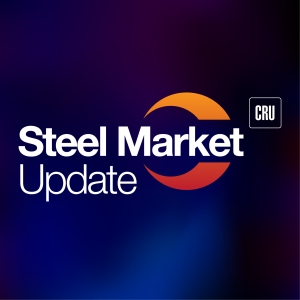
SMU’s sheet and plate prices took a breather this week, holding relatively steady at multi-month highs.

SMU’s Current and Future Sentiment Indices for scrap increased this month, according to the latest data from our ferrous scrap survey.

SMU’s December ferrous scrap market survey results are now available on our website to all premium members.

Nucor increased its weekly hot-rolled coil spot list price by $10 per short ton (st) on Monday, Dec. 8.

We can be grateful for some things. One is the regional agreement between the US, Canada, and Mexico that is currently undergoing review. A decision is expected by July 2026 on whether to extend the agreement, which is set to expire in 2036, for another 16 years (to 2052). Three days of hearings just concluded with comments of five minutes’ duration from more than 50 witnesses.

During the summer of 1989, I made a journey in search of recoverable scrap metal to a place I only studied in history books and in military training.
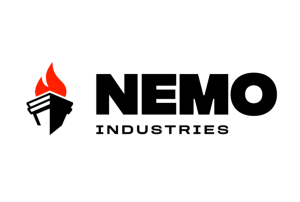
NEMO Industries CEO Daniel Liss has already made waves with his bold plan to bring pig iron production back to US soil. In an SMU Community Chat on Wednesday, he shifted the conversation from inspiration to execution, laying out timelines, financing strategies, and customer demand that could reshape the steel supply chain by the end of the decade.

It's important to keep in mind - maybe especially for those of us in the US - that the rest of the world can act too. And I think we're already seeing signs of that action, or at least that's been my takeaway from some of SMU's recent reporting and from Community Chat webinars for both SMU and AMU.

Major activity in the US scrap export market has occurred, mainly driven by Turkey.

Metalforming manufacturers were mixed in their outlook, anticipating business conditions could either worsen or, at best, hold in the near-term, according to PMA's November report.

Sources expect the recent spot market price hikes on domestically produced plate products to be accepted by the market.
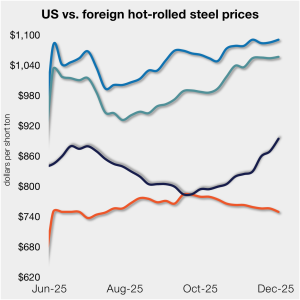
The price gap between stateside hot band and landed offshore product has inched closer to parity, now at its lowest level since the summer.

The price hike parade that got underway in earnest in November looks set to continue in December. And it's been joined by, well, just about everybody.

All of SMU’s sheet price indices rose this week, climbing to new multi-month highs. At the same time, our plate index held steady.
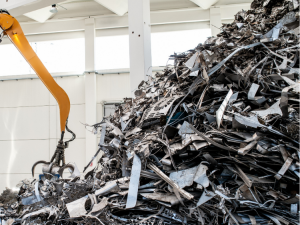
A steelmaker in the Southeast has entered the market for shredded, P&S, and HMS at prices of $20/gt over November.
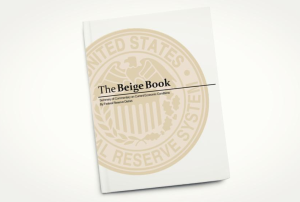
Economic activity across the US was largely static with some modest activity unfolding at a sluggish pace, according to the US Federal Reserve’s (The Fed) latest Beige Book report.

SMU’s Current Steel Buyers’ Sentiment Index improved this week as Future Sentiment inched up as well, according to our most recent survey data.
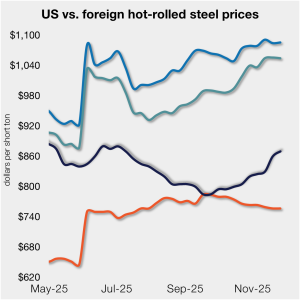
The price gap between stateside hot band and landed offshore product tightened further this week, as the average price for domestic hot-rolled was $10/st higher w/w.
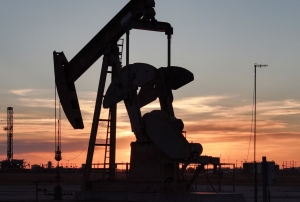
US and Canadian rig counts both declined this week, according to the latest Baker Hughes data released on Wednesday, Nov. 26.

SMU’s latest steel buyers market survey results are now available on our website to all premium members.

You might be looking forward to some Black Friday deals. But I wouldn't expect many, at least when it comes to flat-rolled steel.

Steel mill lead times extended this week on all sheet and plate products tracked, according to responses from SMU’s latest market survey.